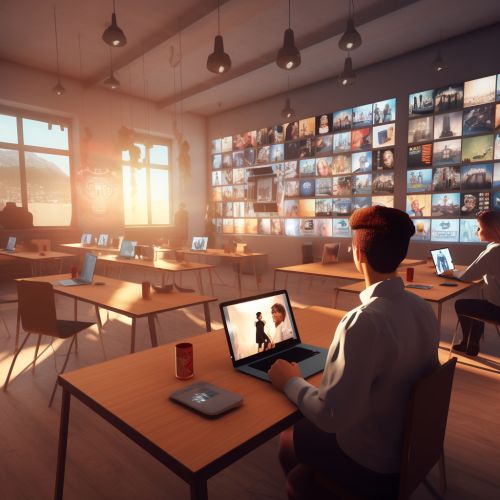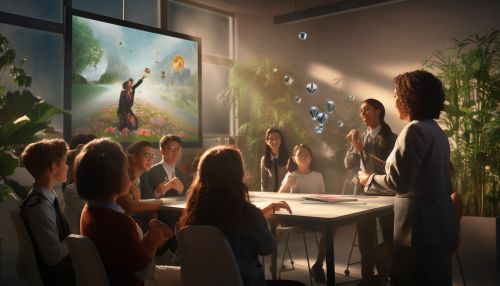Virtual Classroom
Introduction
A virtual classroom is a digital replica of a traditional classroom or training room. The instructors teach, and the participants learn in real-time, face-to-face but via internet-enabled technology devices. The classroom or the meeting room staple – whiteboard – remains intact. Brainstorming, ideation, and discussions happen in real-time. Tests are given and taken pre and post the session. Reports are prepared after the session ends.


History and Evolution
The concept of a virtual classroom is not new. It traces its origins to the world of corporate training and higher education. The term 'virtual classroom' was coined by NCSA in the late 1980s, when they developed a graphical, collaborative environment named Collage. The development of the internet and the proliferation of broadband access have transformed the virtual classroom from a niche phenomenon to a mainstream method of education and training.
Components of a Virtual Classroom
A virtual classroom typically has several major components:
- Technology: The most basic component of a virtual classroom is the technology that is used to create it. This includes computers, internet connection, and software applications.
- Content: This is the material that is being taught in the classroom. It can be in the form of text, images, videos, or interactive activities.
- Instructor: The instructor is the person who is teaching the content. They may be a teacher, a professor, a trainer, or any other person who has expertise in the subject matter.
- Students: The students are the people who are learning the content. They may be children, adults, employees, or any other group of people who are interested in learning about a particular subject.


Advantages of a Virtual Classroom
There are several advantages to using a virtual classroom:
- Flexibility: Students can learn at their own pace and at their own convenience. They can access the classroom from anywhere in the world, as long as they have an internet connection.
- Cost-Effective: Virtual classrooms can be more cost-effective than traditional classrooms because they eliminate the need for physical space and reduce the cost of travel.
- Interactive: Virtual classrooms can be highly interactive. Students can participate in discussions, ask questions, and collaborate with their peers.
- Personalized Learning: Virtual classrooms allow for personalized learning. Instructors can tailor the content to meet the needs of individual students.
Disadvantages of a Virtual Classroom
Despite its many advantages, there are also some disadvantages to using a virtual classroom:
- Technical Issues: Technical issues can disrupt the learning process. These can include problems with internet connectivity, software glitches, and hardware malfunctions.
- Lack of Social Interaction: Although virtual classrooms can be interactive, they cannot replicate the social interactions that occur in a traditional classroom.
- Requires Self-Discipline: Virtual classrooms require a high degree of self-discipline. Students must be motivated to participate and complete their assignments on time.


Future of Virtual Classrooms
The future of virtual classrooms looks promising. With advancements in technology, such as artificial intelligence and virtual reality, virtual classrooms are expected to become even more interactive and engaging. Furthermore, as more people become comfortable with online learning, the demand for virtual classrooms is likely to increase.
